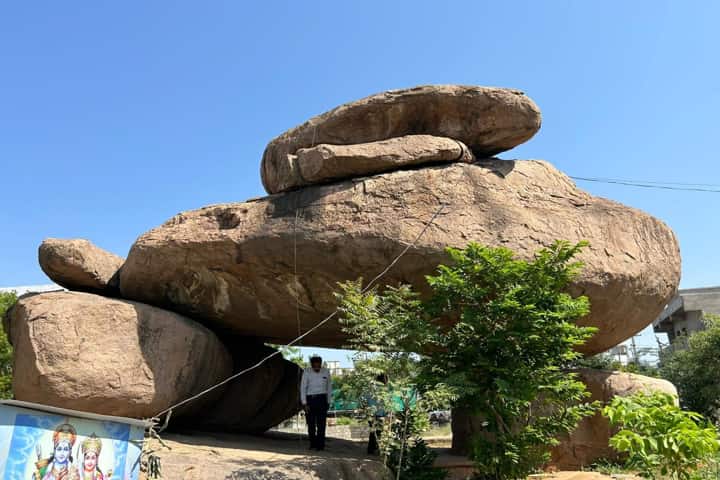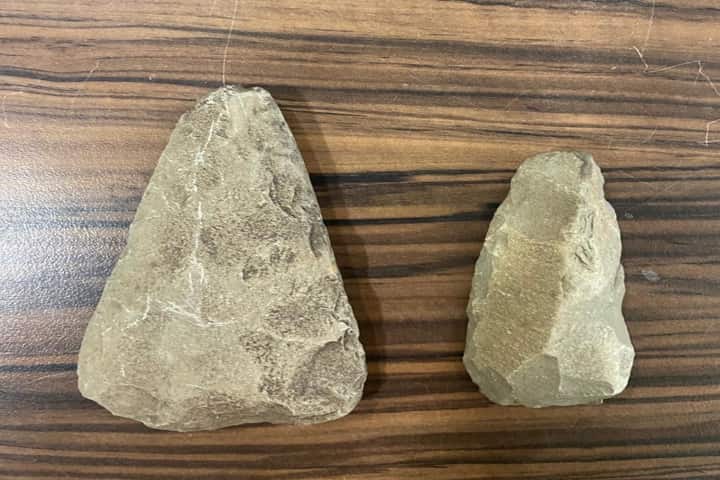Artefacts discovered in cities that have been established years ago provide pointers to historical significance of the place. An example of this came to the fore when members of an amateur archaeologist organisation Kotha Telangana Charitra Brundam during their exploration in Hyderabad found Neolithic stone axes or celts.
KTCB team which included Dr. E. Sivanagi Reddy and Sriramoju Haragopal, its convenor, were examining prehistoric and unique rock formations which could have been used as shelters in the past during their visit to Tabelu Gundu or Tortoise rock. This formation is now a traffic island on a road that leads to BNR Hills adjacent to Jubilee Hills.
Looking for prehistoric rock art underneath a natural rock formation in the area they chanced upon the two axes made of basalt stone. The length, width and thickness of the two stones are 12×7.2×2.1 cm and 9.2×3.9×2.2 cm respectively.

On closer examination of the two stones, it came to light that they belong to Neolithic people who had moved from food gathering and hunting stage to agriculture and domestication of animals during the period between 4000 and 2000 BCE.
Talking to India Narrative, Haragopal said: “The Tortoise rock may have been a place for seasonal habitation as this area is widely known to have several sources of water including lakes like Durgam Cheruvu and Malkam Cheruvu in the vicinity.”
Such stone axes have to come light for the first time from Hyderabad and this shows that the region’s history goes back to 6,000 years. Having discovered these relics, the archaeologists have asked for further investigation of the area.




















